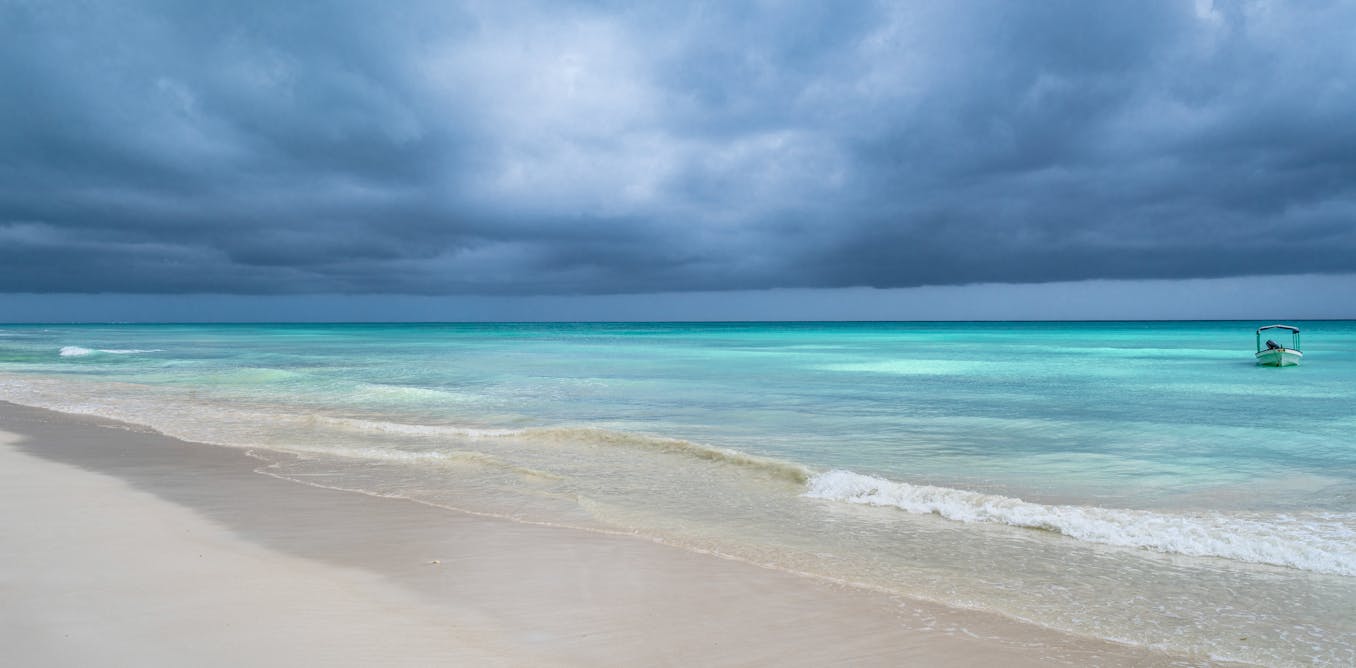A view of weekend day-trippers at a popular Parisian park overlooking the Seine, Georges Seurat’s Post-Impressionist masterpiece, A Sunday on La Grande Jatte (1884–86), is a study in contradictions: a painting of modern life that doesn’t capture a moment so much as stops it dead in its tracks, and a depiction of subjects as solid (if not stolid) volumes that dissolve into an aerosol of colors upon close examination.
Viewed from a 19th-century perspective, La Grande Jatte is both contemporary and ancient, imbuing its scene of evanescent bourgeois leisure with the gravitas of a decorated tomb. Like many such murals, La Grande Jatte is mostly a procession of profiles facing one direction. “I want to make modern people, in their essential traits, move about as they do on those friezes,” Seurat once wrote, though by “move” he actually meant fixing them within a sort of chromatic eternity—making the sepulchral, as it were, bloom in brilliant hues.
La Grande Jatte was the first composition in which Seurat employed the cutting-edge technique we know as pointillism, but which he called divisionism or peinture optique. That he applied this methodology to recall the art of antiquity, however, owes to two major influences on the evolution of his style. The first grew out of his time at the École des Beaux-Arts in Paris under the tutelage of painter Henri Lehmann, who specialized in history painting and portraits. A former student of that titan of 19th-century academic art, Jean Auguste Dominique Ingres, he transmitted Ingres’s crystalline, if languid, neoclassicism to a young Seurat, who maintained it as a template for the rest of his career.
The other inspiration for Seurat’s style came from his readings on color theory and perception—most notably The Principles of Harmony and Contrast of Colors, written in 1839 by noted French chemist Michel Eugène Chevreul. One of the first volumes of its type, the book laid out Chevreul’s notion of the “simultaneous contrast of colors,” a phenomenon in which two hues placed close together will seem to mix as if they were complements of each other. This describes precisely how Seurat’s dots relied on the viewer’s eye, rather than the artist’s brush, to merge colors. Indeed, Seurat thought of his approach as an empirical expression. “Some say they see poetry in my paintings,” he remarked. “I see only science.”
The painting’s setting, the Île de la Grande Jatte, is a narrow sliver of land in the middle of the Seine near where the river makes the southwesterly turn that divides the city into the Left and Right Banks. Its name, translated as “Island of the Big Bowl,” derives from a topographical depression that constitutes its central feature.
The park was created in 1818 from land owned by the Duke of Orléans (later King Louis-Philippe I). Between the 1850s and 1870s, it was expanded as part of the massive urban renewal project run by Baron Haussmann under the direction of Emperor Napoleon III. It soon became a favored destination for plein air painters, including the Impressionists, Seurat himself making frequent excursions there.
Seurat’s first major composition, Bathers at Asnières (1884), immediately preceded La Grande Jatte, and while pointillism didn’t factor into the former, the painting became a test for the technique. Presenting a group of working-class men on the Seine’s riverbank, the artist rendered Bathers in brush marks that more or less blended together, often as choppy crosshatches that foreshadowed his signature dots. As with the crowd in La Grande Jatte, Seurat endowed his bathers with the solemnity of a Grecian entablature.
Basically, La Grande Jatte is an extension of Bathers both pictorially and thematically, depicting the same landscape and sharing some of its details. In real life, Asnières is directly opposite La Grande Jatte. Together, the paintings portray both sides of the river; they even share the same railway bridge in the background. The two mirror each other physically, the subjects in the former facing left and the figures in the latter looking right, but also sociologically, as the proletarian loungers in Bathers form a distinctive contrast with the predominantly middle-class promenaders in La Grande Jatte.
Seurat began work on La Grande Jatte during the summer of 1884 and took two years to finish it. He completed some 70 studies for the piece, many of which were painted (mostly on board, with three on canvas); visible within them is the evolution of pointillism from the cross-hatching used in Bathers.
As to its symbolism, La Grande Jatte is somewhat ambiguous. The park was a well-known pickup spot for sex workers, hinted at by the inclusion of a woman fishing (a metaphor for solicitation) and the oddity of a monkey on a leash held by a woman strolling arm-in-arm with a man; the French word singesse (female monkey) is slang for prostitute, suggesting her occupation.
The painting met with derision when it appeared in the last Impressionist exhibition in 1886. Joris-Karl Huysmans, author of À rebours (Against Nature, 1884) and renowned art critic, wrote: “Strip his figures of the colored fleas with which they are covered, and underneath there is nothing, no soul, no thought, nothing.”
Notwithstanding Huysmans’s gibe, Seurat continue to push pointillism in subsequent works, doubling down on his approach by surrounding them with bands of dots that suggest their migration into the realm of the viewer. Seurat even added the same to La Grande Jatte when he re-stretched the canvas three years after its completion.
Seurat’s career was cut short by his death at 31 from an unknown infection, surmised to be meningitis, diphtheria, or pneumonia. Yet in that brief time, he produced an icon of art history in La Grande Jatte—a painting that relies on the viewer as much as the artist for its visual effects.

The post “Why Is Georges Seurat’s A Sunday on La Grande Jatte So Important?” by Anne Doran was published on 07/25/2025 by www.artnews.com




































Leave a Reply